The Ram Cichlid (Mikrogeophagus ramirezi) is truly a captivating presence in the vibrant world of freshwater aquariums. Its stunning appearance and intriguing behavior have made it a favorite among many enthusiasts. This South American native, also known as the Butterfly Cichlid or Ramirezi, is part of the esteemed Cichlidae family and shares close ties with other beloved species like the Bolivian Ram and German Blue Ram.
Table of Contents
One of the most intriguing aspects of the Ram Cichlid is its natural habitat. Found in the slow-moving waters of the Orinoco River basin in Colombia and Venezuela, these fish thrive in areas with dense vegetation and soft, slightly acidic water. As a result, recreating their natural environment in captivity is crucial for their well-being and longevity.
When it comes to their diet, Ram Cichlids are omnivores, meaning they require a varied diet consisting of both plant and animal matter. In the wild, they feed on small invertebrates, insects, and algae. In an aquarium setting, they readily accept high-quality flake or pellet food, along with occasional treats like frozen or live brine shrimp, daphnia, and bloodworms.
Ram Cichlids are generally peaceful and make excellent tank mates for other non-aggressive species. They are mid-dwellers, spending most of their time in the middle and bottom sections of the aquarium. However, it’s essential to note that males can become territorial, especially during breeding, so providing plenty of hiding spots and visual barriers is crucial for maintaining harmony in the tank.
One fascinating aspect of Ram Cichlid behavior is their unique breeding habits. These fish form monogamous pairs and engage in elaborate courtship rituals, including fin flaring and circling each other. Once a pair has bonded, they will work together to clean a flat surface, such as a rock or leaf, where the female will lay her eggs for the male to fertilize. Both parents take an active role in caring for the eggs and fry, making them a captivating species for those interested in observing parental care in fish.
Throughout history, the Ram Cichlid has been a popular choice among aquarium enthusiasts. First described by George S. Myers in 1948, this species has undergone several taxonomic revisions, with some experts suggesting that there may be multiple distinct species or subspecies within the Mikrogeophagus ramirezi complex.
A fun fact about Ram Cichlids is their ability to change color based on their mood and environment. When feeling stressed or threatened, they may display a paler coloration, while a more vibrant appearance often indicates a healthy, content fish.
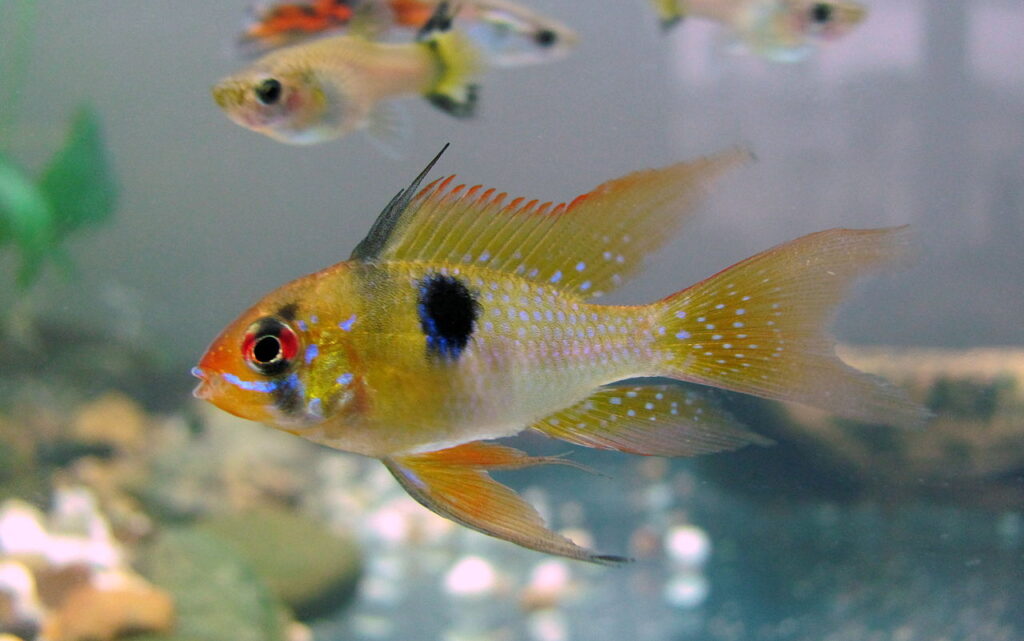
Key Information
The Ram Cichlid (Mikrogeophagus ramirezi) is a stunning freshwater fish that captivates aquarium enthusiasts with its vibrant colors and unique patterns. These small cichlids display a beautiful combination of blue, yellow, and red hues, with iridescent scales that shimmer under aquarium lighting. The body of the Ram Cichlid is adorned with vertical stripes, while its fins feature intricate spotted patterns. The intensity of their coloration can vary depending on factors such as mood, health, and breeding status, with males often exhibiting brighter colors than females.
| Family | Cichlidae |
| Origin | Orinoco River basin in Colombia and Venezuela |
| Price | Moderate to high, depending on the variant and availability |
| Common Names | Ram Cichlid, Butterfly Cichlid, Ramirezi, German Blue Ram |
| Variants | Gold Ram, Electric Blue Ram, Balloon Ram |
| Ideal Tank Size | Minimum 20 gallons (75 liters) for a pair, larger for a community tank |
| Water Parameters | Temperature: 78-85°F (25-29°C), pH: 5.0-7.0, Hardness: 1-7 dGH |
| Lifespan | 3-4 years on average, up to 5 years with proper care |
| Full Size | 2-3 inches (5-7 cm) |
| Natural Environment | Slow-moving, shallow waters with dense vegetation and soft, slightly acidic water |
| Behavior | Generally peaceful, can be territorial during breeding, males may display aggression towards each other |
| Habitat Preference | Mid-dweller, prefers areas with plants, driftwood, and hiding spots |
| Aquarium Decoration | Soft, sandy substrate, live plants (e.g., Amazon Sword, Java Moss), driftwood, rocks, and caves for hiding |
| Ideal Tank Mates | Other peaceful, similarly-sized fish like Tetras, Rasboras, small Catfish, and dwarf Cichlids |
| Fish to Avoid | Large, aggressive fish that may bully or prey on Ram Cichlids, such as larger Cichlids, Barbs, and Sharks |
| Best Foods/Diet | Omnivorous; high-quality flake or pellet food, supplemented with frozen or live foods like brine shrimp, daphnia, and bloodworms |
| Disease | Susceptible to common freshwater diseases like Ich, fungal infections, and parasites; maintain good water quality and quarantine new fish to prevent outbreaks |
| Sex-Switch | Ram Cichlids do not change sex |
| Gender Differences | Males are typically larger and more colorful, with extended fins; females are smaller and have a pinkish belly when ready to spawn |
| Care Level | Moderate; requires stable water parameters, regular maintenance, and a well-designed habitat |
| Breeding Level | Moderate; monogamous pair formation, egg deposition on flat surfaces, and biparental care; may require specific water parameters and conditioning for successful breeding in captivity |
Ideal Tank Mates
It is essential to carefully choose tank mates for the Ram Cichlid (Mikrogeophagus ramirezi) that share similar water conditions, temperament, and habitat preferences. Ram Cichlids are renowned for their peaceful nature and can thrive in a well-planned community tank with other non-aggressive species.
Compatibility is key when selecting tank mates for Ram Cichlids. These fish prefer soft, slightly acidic water and a temperature range of 78-85°F (25-29°C). Tank mates should be able to tolerate these conditions and not compete for the same resources, such as food and territory. Additionally, it’s crucial to avoid fish that are much larger or more aggressive than Ram Cichlids, as they may bully or even prey on them.
Here are 15 ideal tank mates for Ram Cichlids, along with a brief explanation of why they are compatible:
1. Neon Tetras (Paracheirodon innesi)
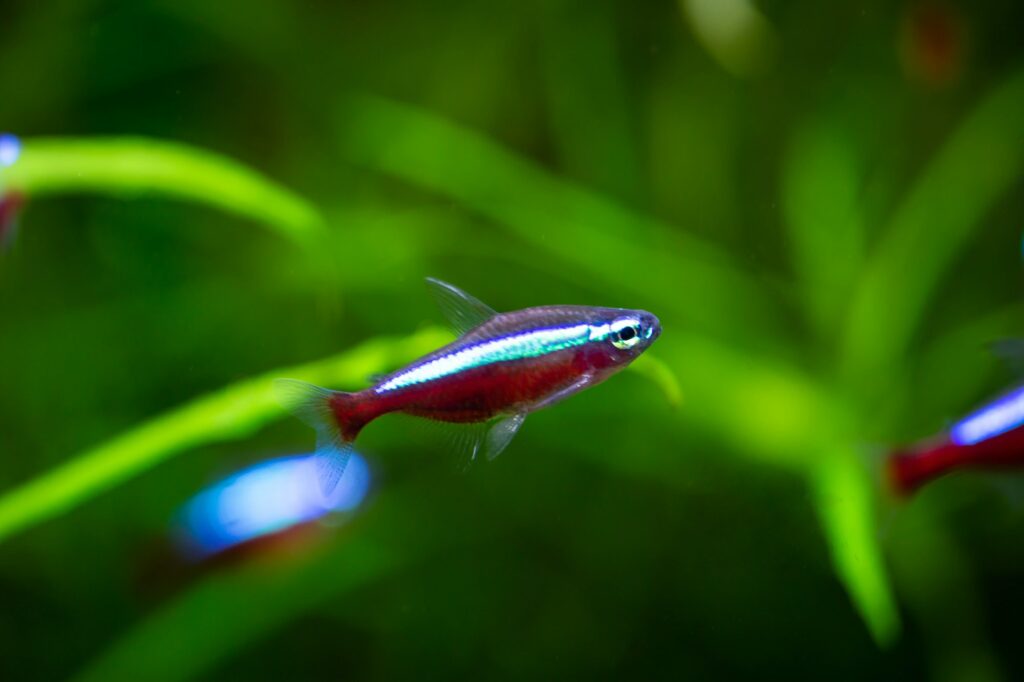
These small, colorful fish are peaceful and have similar water requirements to Ram Cichlids. They occupy the upper levels of the tank, minimizing competition for space.
2. Cardinal Tetras (Paracheirodon axelrodi)
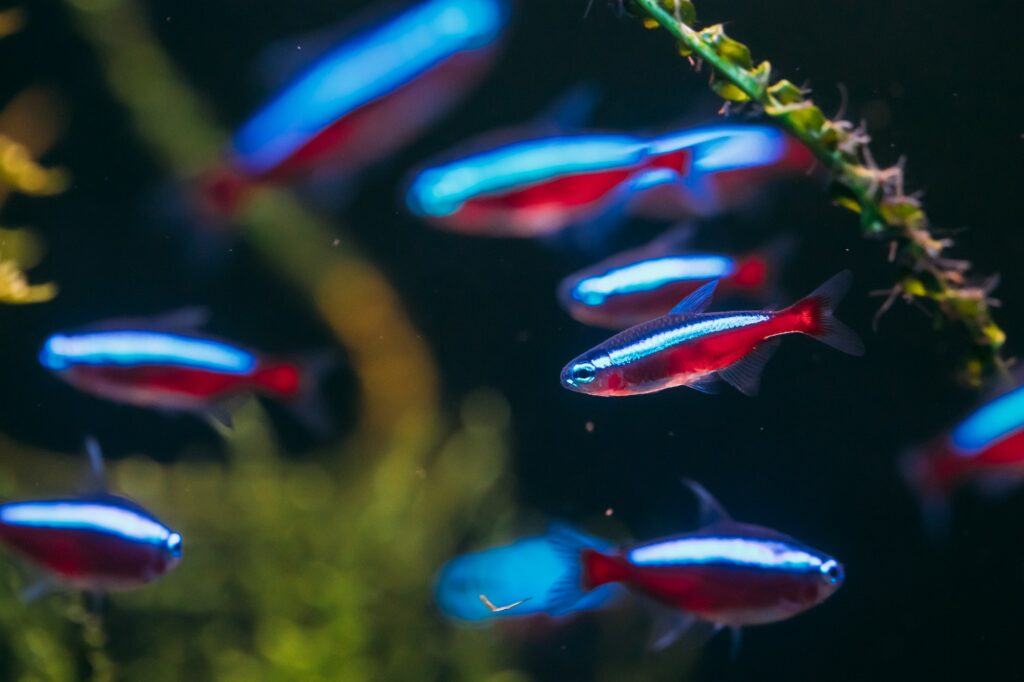
Like Neon Tetras, Cardinal Tetras are peaceful and prefer soft, slightly acidic water. Their vibrant red and blue coloration complements the Ram Cichlid’s appearance.
3. Rummy Nose Tetras (Hemigrammus rhodostomus)
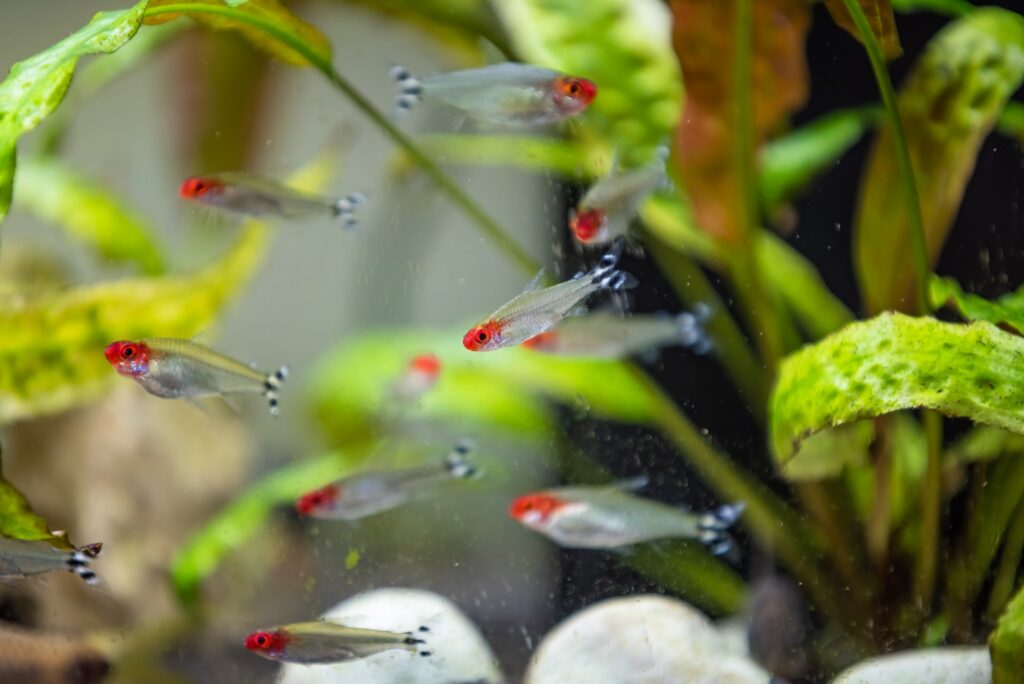
Rummy Nose Tetras are active schooling fish that thrive in the same water conditions as Ram Cichlids. They are peaceful and add visual interest to the upper levels of the tank.
4. Harlequin Rasboras (Trigonostigma heteromorpha)

These small, hardy fish are peaceful and adaptable to various water conditions. They occupy the middle and upper levels of the tank, leaving plenty of space for Ram Cichlids.
5. Pygmy Corydoras (Corydoras pygmaeus)
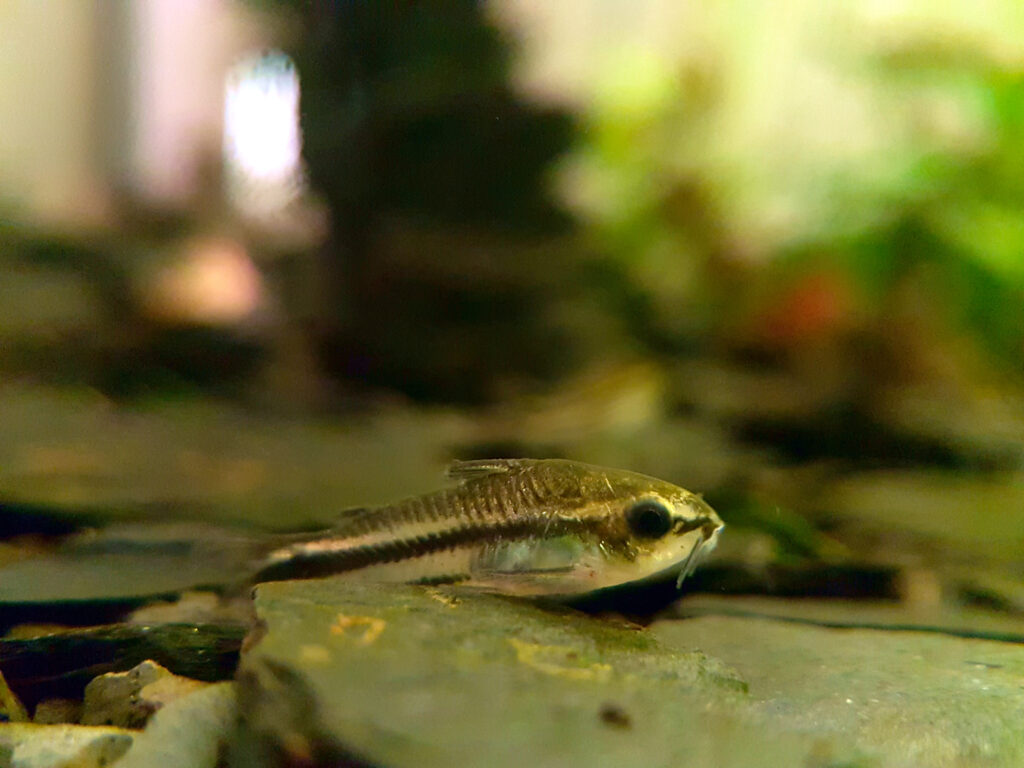
These miniature catfish are peaceful bottom-dwellers that help keep the substrate clean. They are compatible with Ram Cichlids and add diversity to the tank’s lower levels.
6. Otocinclus Catfish (Otocinclus spp.)
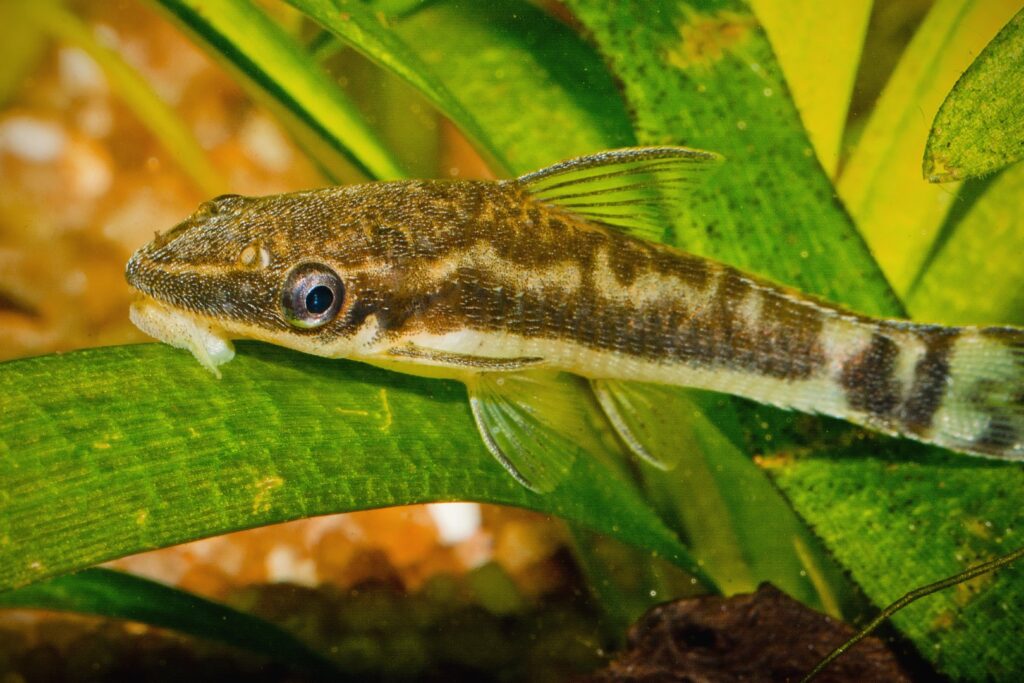
Otocinclus Catfish are small, algae-eating fish that are peaceful and compatible with Ram Cichlids. They help maintain a clean tank by consuming algae growth on plants and decorations.
7. Kuhli Loaches (Pangio kuhlii)
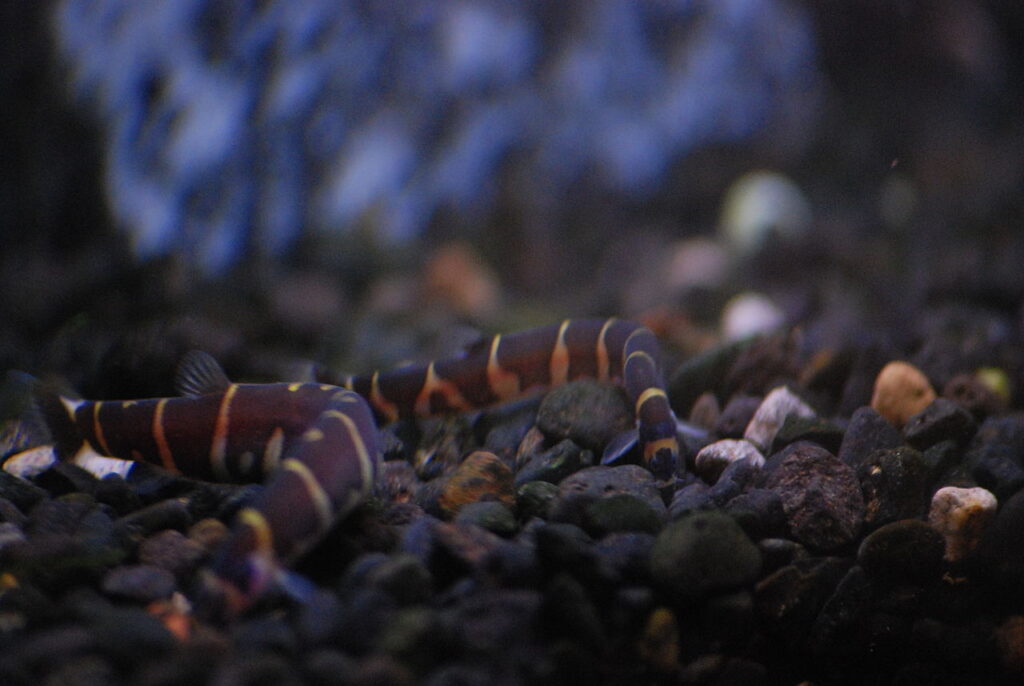
These peaceful, eel-like fish are bottom-dwellers that thrive in soft, slightly acidic water. They are nocturnal and provide a unique addition to the tank’s lower levels.
8. Cherry Shrimp (Neocaridina davidi)
Cherry Shrimp are small, peaceful invertebrates that can coexist with Ram Cichlids in a well-planted tank. They help keep the tank clean by scavenging for leftover food and detritus.
9. Dwarf Gouramis (Trichogaster lalius)
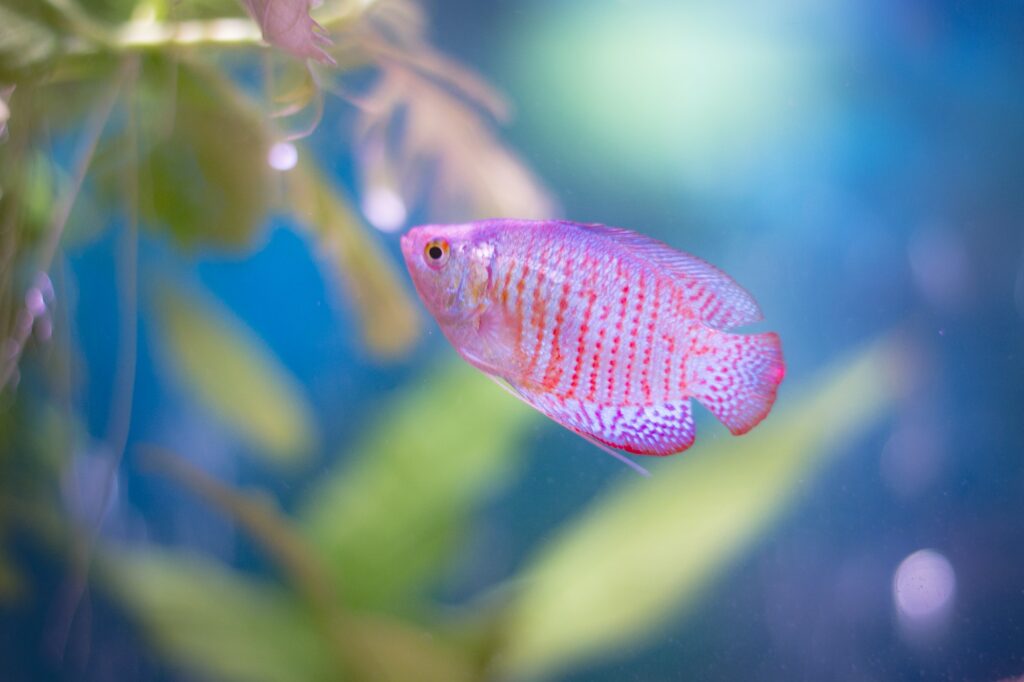
These peaceful labyrinth fish occupy the middle and upper levels of the tank. They have similar water requirements to Ram Cichlids and add a vibrant splash of color to the aquarium.
10. Celestial Pearl Danios (Danio margaritatus)
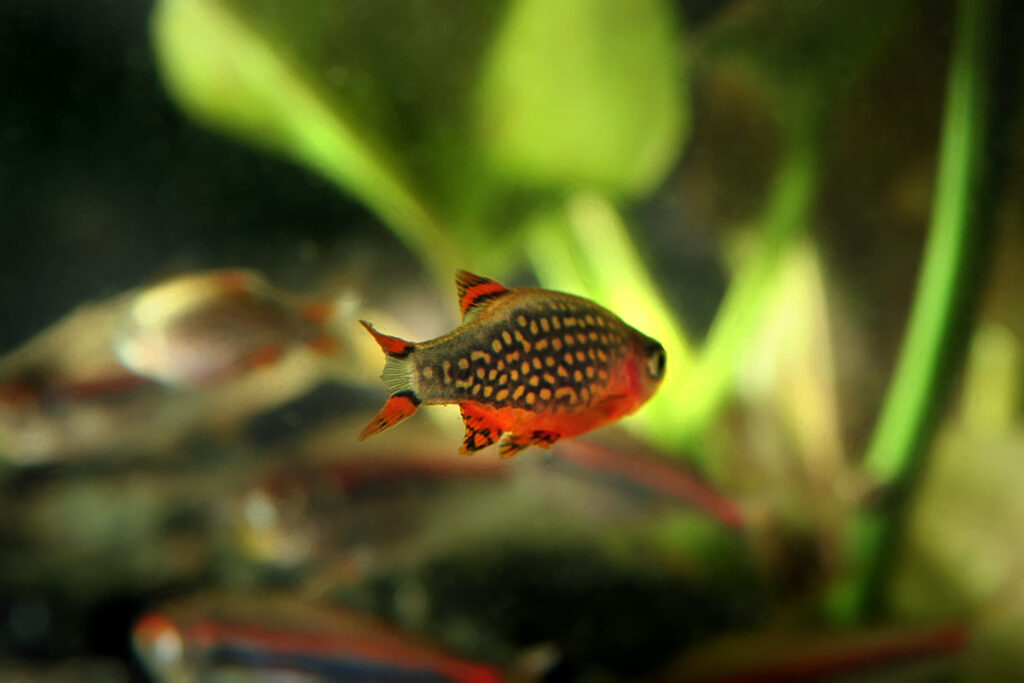
Celestial Pearl Danios are small, peaceful fish that thrive in the same water conditions as Ram Cichlids. They occupy the middle levels of the tank and have a unique, spotted appearance.
11. Ember Tetras (Hyphessobrycon amandae)
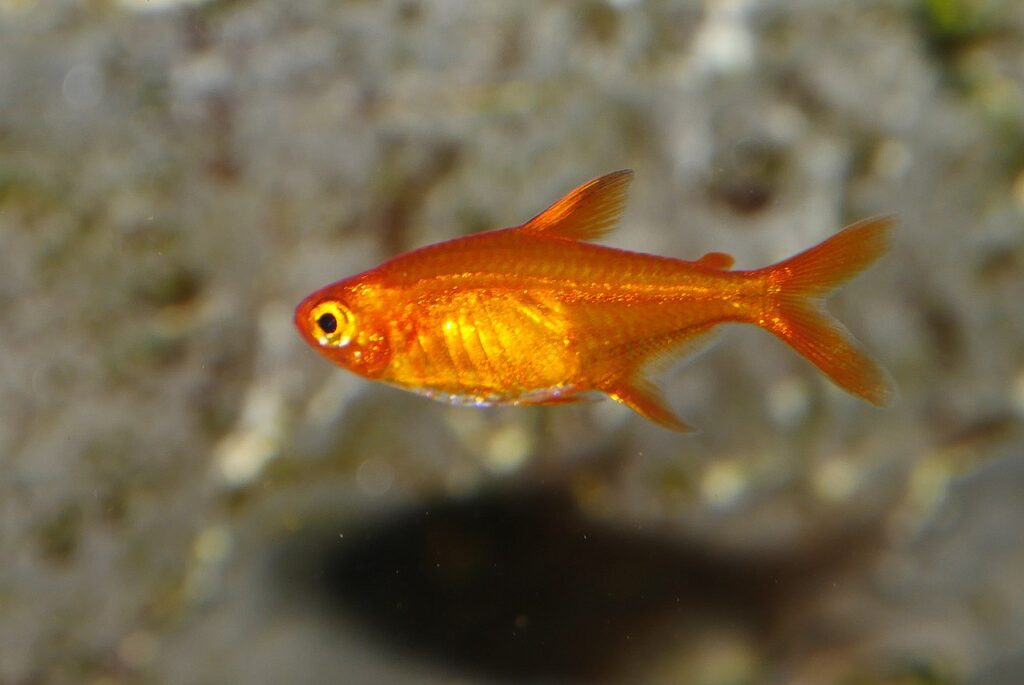
These small, peaceful tetras have a striking orange coloration that complements the Ram Cichlid’s appearance. They prefer soft, slightly acidic water and occupy the middle and upper levels of the tank.
12. Endler’s Livebearers (Poecilia wingei)
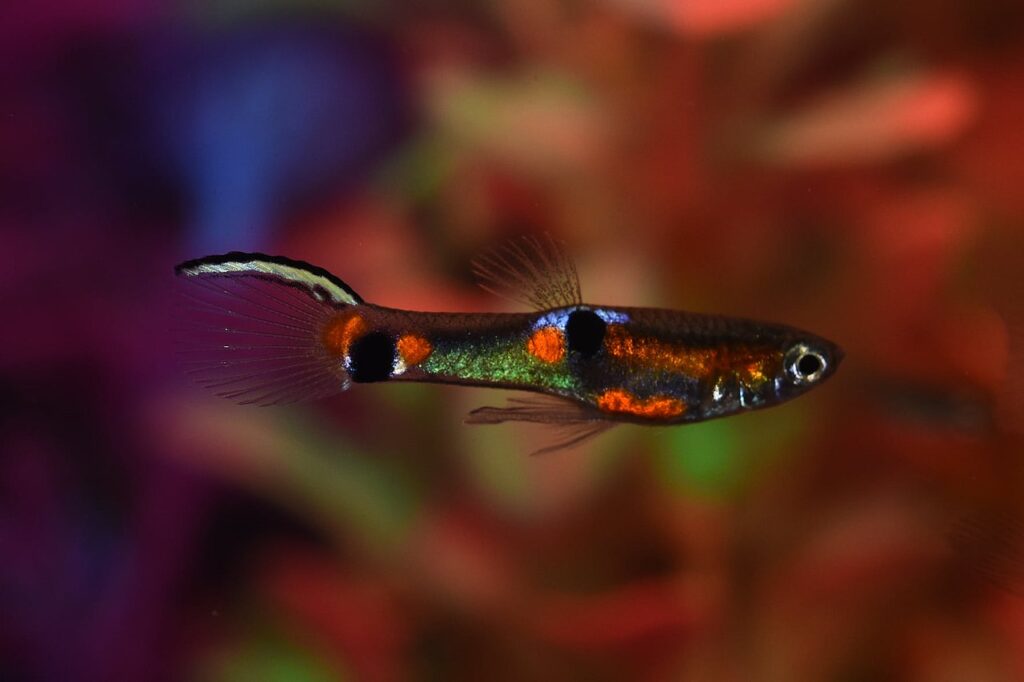
Endler’s Livebearers are small, colorful fish that are peaceful and compatible with Ram Cichlids. They prefer similar water conditions and occupy the upper levels of the tank.
13. Apistogramma Dwarf Cichlids (Apistogramma spp.)
Various species of Apistogramma Dwarf Cichlids can coexist peacefully with Ram Cichlids, as they have similar water requirements and temperament. However, it’s essential to provide plenty of hiding spots and territorial boundaries to minimize aggression.
14. Nerite Snails (Neritina spp.)
Nerite Snails are peaceful, algae-eating invertebrates that can help keep the tank clean. They are compatible with Ram Cichlids and add an interesting, slow-moving element to the aquarium.
15. Bristlenose Plecos (Ancistrus spp.)
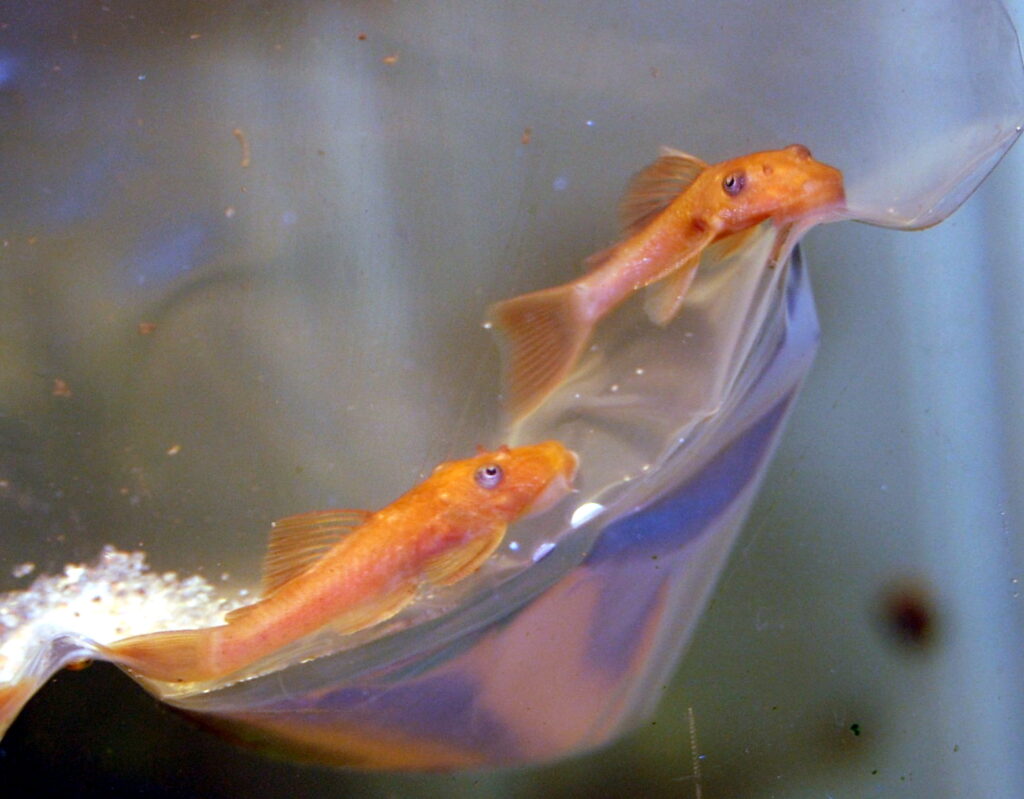
Bristlenose Plecos are small, peaceful catfish that help control algae growth in the tank. They are compatible with Ram Cichlids and occupy the lower levels of the aquarium, providing a valuable cleaning service.
FAQs
How many Ram Cichlids should I keep in my tank?
It’s best to keep Ram Cichlids in pairs or small groups of one male and a few females. In a 20-gallon tank, a single pair can thrive. For larger tanks, you can keep multiple pairs, but be sure to provide plenty of hiding spots and territorial boundaries to minimize aggression.
Can Ram Cichlids be kept with shrimp?
Yes, Ram Cichlids can coexist with certain types of shrimp, such as Cherry Shrimp (Neocaridina davidi). However, it’s essential to provide ample hiding spots and vegetation for the shrimp to minimize the risk of predation. Keep in mind that smaller or younger shrimp may still be vulnerable to being eaten by adult Ram Cichlids.
How often should I feed my Ram Cichlids?
Adult Ram Cichlids should be fed small, balanced meals 2-3 times per day. Provide a varied diet consisting of high-quality flake or pellet food, along with occasional treats like frozen or live brine shrimp, daphnia, and bloodworms. Avoid overfeeding, as this can lead to poor water quality and health issues.
Can Ram Cichlids be kept in a planted tank?
Yes, Ram Cichlids are well-suited for planted tanks. They appreciate the natural cover and territorial boundaries that plants provide. Choose hardy, low-light plants like Java Fern, Anubias, and Cryptocoryne species, as Ram Cichlids may occasionally dig or uproot more delicate plants.
How can I encourage my Ram Cichlids to breed?
To encourage breeding, ensure that your Ram Cichlids are healthy and well-fed. Maintain optimal water conditions with stable parameters and perform regular water changes. Provide a flat surface, such as a rock or broad leaf, for the pair to clean and use as a spawning site. Gradually raise the water temperature to around 82-84°F (28-29°C) to stimulate spawning behavior.
How long do Ram Cichlid eggs take to hatch?
Ram Cichlid eggs typically hatch within 48-72 hours after being fertilized. The fry will absorb their egg sacs and become free-swimming within another 3-5 days. During this time, the parents will care for and protect the eggs and fry.
Can I keep multiple male Ram Cichlids together?
It’s generally not recommended to keep multiple male Ram Cichlids together in the same tank, as they can become territorial and aggressive towards each other, especially during breeding. If you must keep multiple males, ensure that the tank is large enough (at least 50 gallons) and heavily decorated with plenty of hiding spots and visual barriers to minimize confrontations.